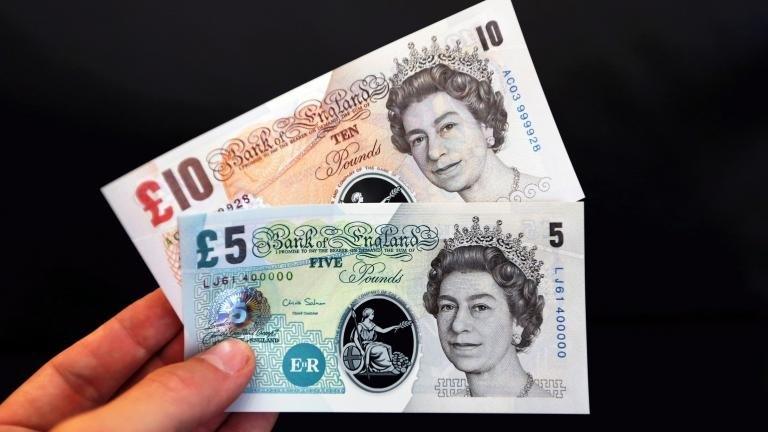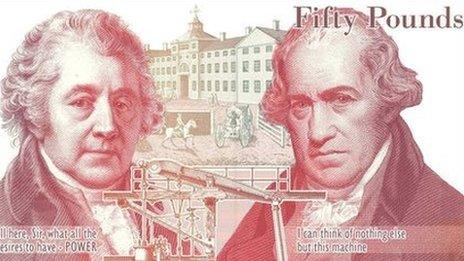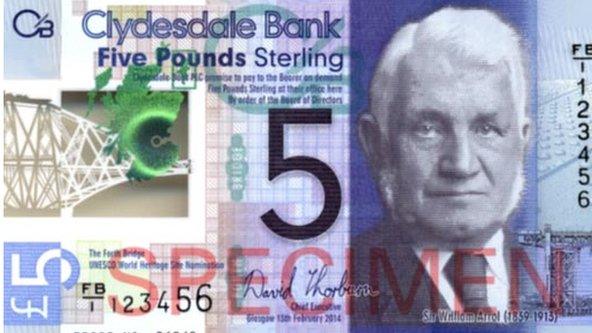Royal Bank of Scotland to introduce polymer banknotes
- Published

Royal Bank of Scotland is to switch from its paper money to polymer, following a lead set by its Scottish rivals.
Clydesdale Bank and Bank of Scotland are already making the transition and the Bank of England is to introduce the plastic notes from next year.
Royal Bank of Scotland said it was to re-design its notes with new subjects for portraits.
The £5 note should be in circulation from the second half of 2016.
The £10 note will be in use a year later.
Polymer notes will be 15% smaller than the cotton paper variety. They have been found to be cleaner and more secure, and their increased durability should mean lower costs for the bank.
RBS has been issuing banknotes since 1727 and said it had an average of £1.5bn worth of notes in circulation on a single day.
Its current design features a portrait of Lord Ilay, the first governor of RBS.
On the reverse, it features castles; Edinburgh for the rarely-spotted £1 note, then Culzean, Glamis, Brodick, Inverness and Balmoral.
David Wheldon, chief marketing officer of RBS, said: "It is very important that people have confidence in our banknotes. The move to polymer notes will bring significant benefits to all those who use them. They will be smaller, cleaner and more secure."
The Bank of England announced on 2 September that it is extending its paper-to-polymer transition to £20 notes. It has been consulting with the public on which British visual artist should be on the note.
The new polymer £5 Bank of England note is to be introduced in autumn next year, featuring a portrait of Sir Winston Churchill.
The £10 note will have Jane Austen pictured on it, and comes into circulation a year later. The £20 note will take three to five years to introduce.
- Published18 December 2013

- Published2 September 2015

- Published23 March 2015

- Published20 July 2015

- Published1 June 2015
